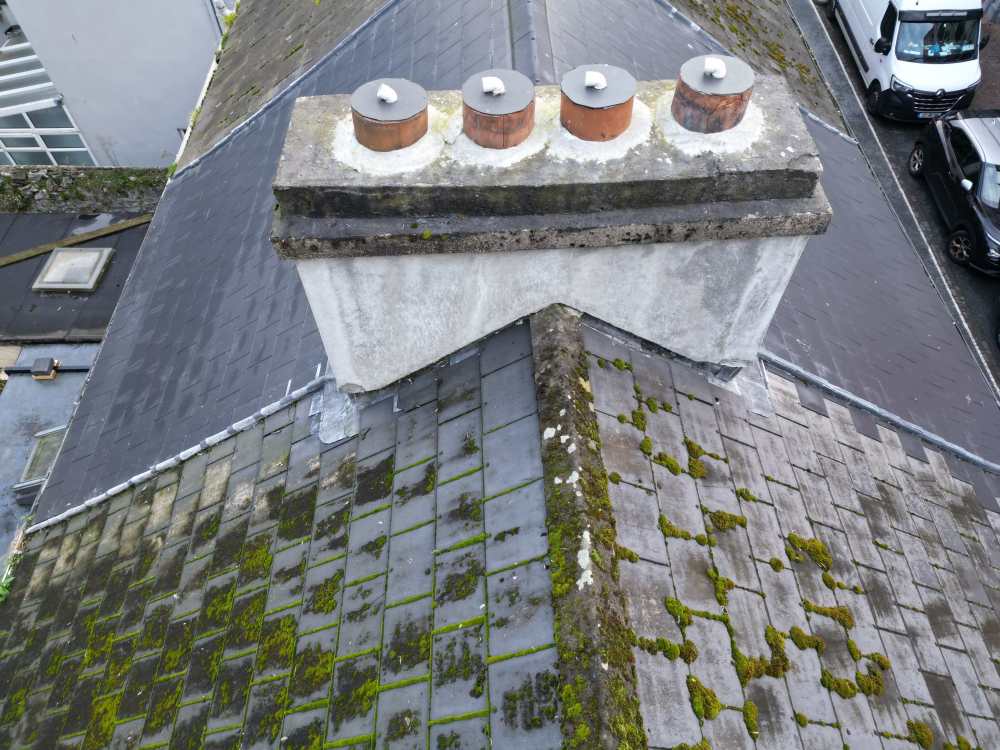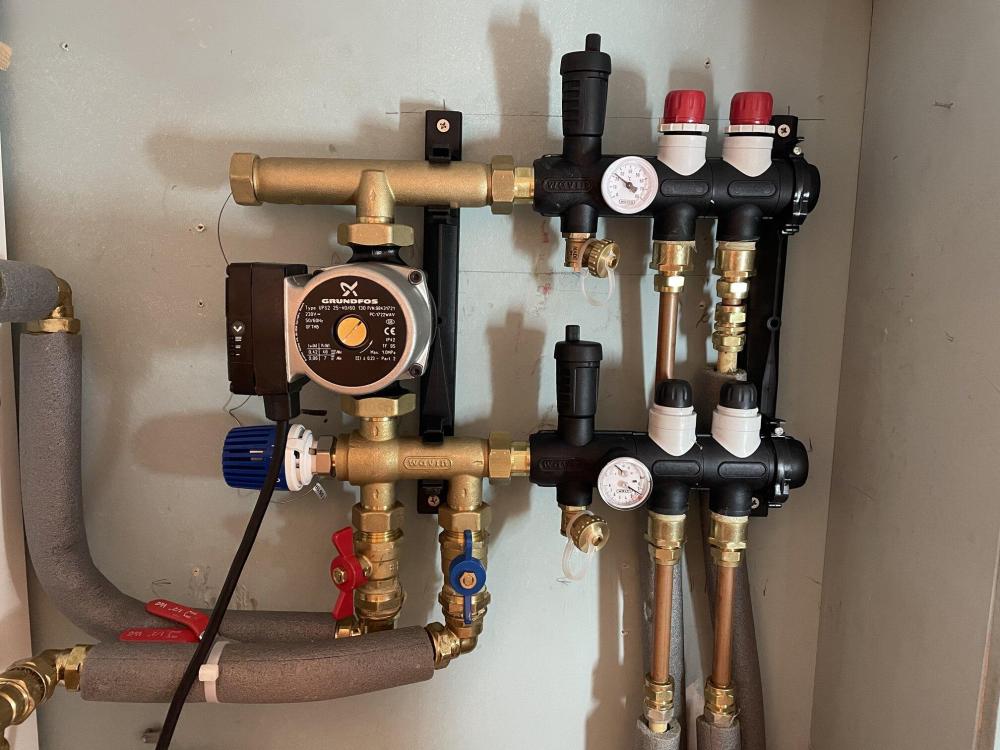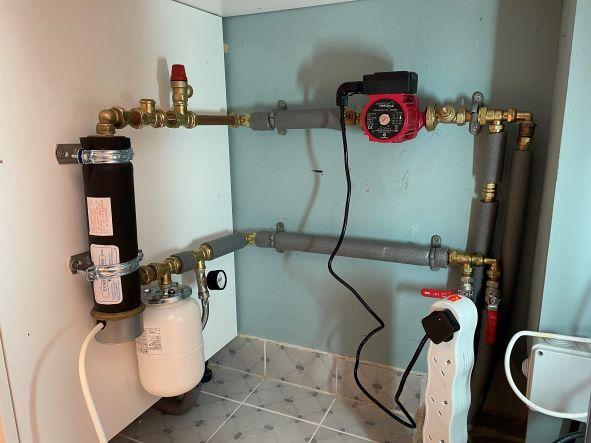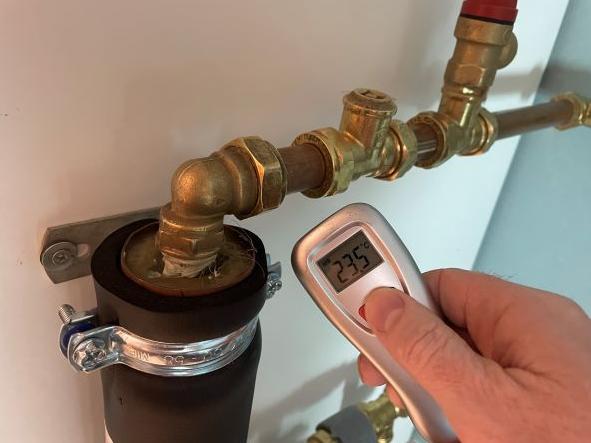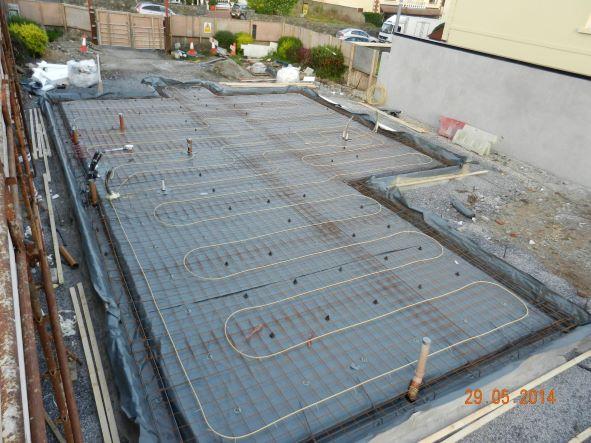
Buzz11
Members-
Posts
9 -
Joined
-
Last visited
Recent Profile Visitors
The recent visitors block is disabled and is not being shown to other users.
Buzz11's Achievements

New Member (2/5)
3
Reputation
-
Storm dry on cracked chimney crown - with photo's
Buzz11 posted a topic in Roofing, Tiling & Slating
Hi there, I have a cracked chimney crown (crown/cap? I think thats what its called) and I was planning on spraying off the moss & green stuff and then applying Storm Dry I'm also going to spray 'patio magic' on the slates to kill off the moss etc Does anyone have advice on this? Am I doing the right thing? TIA 👍 -
So my plumber has installed the manifold & pump and I've attached photo of the setup below. However I've immediately noticed that when the pump is running, its heating the water by its own operation -- theres no willis heater or any other water heater operating, just the pump alone. Its heating the circulation water by about 15C and its set to speed 1, is this normal? if so then I probably won't need any other water heater since its reaching the target temperature by itself. FTI; the volume of water in the underfloor pipes is very small, about 8L for each zone so total 16L. TIA
-
Dunno why the extra bit was put on - twas before my time. Here's something that might work if the angles were right https://www.leadworx.co.uk/shop/lead-slates-pipe-flashing/pitched-lead-slates/
-
I have a rain water pipe that runs from the front to the back of my roof which drains rainwater from the front parapet to the rear. There is no way to add a downpipe on the front of the building so I have to stick with what's already in place. The 4" plastic pipe exits the roof as shown in the photos but it looks like a real patch job....is there a proper tile/pipe adapter that can be fitted instead? I'm having some work done so I'd like to have this redone properly. Thanks in advance.
-
Few more questions for the Oracles 😉 Cooling: Summer overheating is a major problem in our house caused by large south facing windows and high levels of insulation so could underfloor cooling work? I could circulate cool mains water through the slab and dump it out a waste pipe nearby, would this work? It would be a waste of water but we'd only need it during hot spells which only last a week or two at most. I've read about the dangers of creating a due point which could damage timber floors so I'd need to watch out for that but in some limited googling I haven't found any information on under floor cooling with mains water. Shelly controls: I've bought a Shelly Humidity & temperature sensor which is a brilliant piece of kit plus really good value so I'm going to use that along with a relay to control the on/off temperature & timer requirements. Shelly also sell a TRV which would be an interesting way of controlling the underfloor water temperature but while it has digital controls, I don't know if it digitally controls the water temperature? it doesn't appear to have a thermo probe so how is it accurately measuring the water temperature? https://shelly.cloud/shelly-thermostatic-radiator-valve/ https://shelly.cloud/products/shelly-humidity-temperature-smart-home-automation-sensor/
-
Many thanks for that -- brilliant. I'm really grateful for the help on this thread and all the others inc blogs etc which provide really useful information - thank you 👍 I remember when we were fitting out this house in 2014, I needed a stove with a low output (the house needed 2kW heat for the coldest 3m of the year) so I started phoning around "Have you got any low kW output stoves, say 2-4kw?" and the answer nearly ever time was "nah thats not right, surely you mean 12 to 14kW...theres no way 2-4kW could heat a house" yet here I am with a 3kW willis and its turned right down so we don't overheat !
-
Excellent thanks for that and the link. Can I check my understanding in laymans terms; 1. The thermo probe & TRV will give more accurate temperature control. 2. Water needs to be circulating through the willis regardless of whether the TRV is open or closed in order to prevent the willis turning into a hand grenade! Once this is installed, what temperature would you set the willis thermostat to? I'm guessing maybe little bit above the desired floor temp? I assume there's no benefit to having it too high because the TRV/manifold is controlling the temperature and the willis is just supplying hot water a bit above that. I'd like to give the plumber a diagram showing the 2 x tee off's -- in fairness to him, he was very curious whether our basic/temporary setup would work or not and he phoned me after a few days to ask 'could I feel any heat yet?' my reply was eh yeah, it was too hot! I had to turn it off! 😉 He said he'd never seen or fitted such a simple UFH setup, the usual installation has lots of zones and masses of heat from heat pumps etc
-
Thanks folks for all the replies so far ? Manifold or not: I'm convinced now that I should go for manifold mainly because the two zones are crudely divided as 'front' and 'back' of the house, the front being East facing so a bit cooler, the back is west facing and has more windows so greater solar gain. Its likely that I'll need more control at some stage so best to have it installed now while I have the plumbers attention and open invoice book! Slab temperature; unfortunately the entire ground floor is covered with engineered timber floor except the utility room which is tiled so I'll get a true reading there. I'm going to open the kickers in the kitchen to see if I can access the concrete floor and take readings there. I have noticed hot spots when barefoot and I could probably trace a pipe by following the heat. According to the 'as built' drawing the 2 zones are equal at 65m each, the pipe is 1/2" so that works out at .12L x 65m = 7.8L of water per zone, say 16L of water in total for the willis to heat so it'll have an easy life! Water thermostat; yes totally agree with advice that the immersion thermostat shouldn't be relied upon and the manifold with blender/mixer/diverter (not sure what its called) should provide much more accurate temperature control than the immersion. Room thermostat; @Bramcothanks for the tip on the Nest intelligent feature -- I don't want to be fighting the thermostat and paying a high price for the privilege! @JohnMo thats a lovely looking unit and I'll certainly look into that further.
-
Thanks to the pioneers here that posted so much detail on their willis heater setup that I followed in their footsteps and so far so good! Especially @TerryE and @Jeremy Harris Like some previous posters & bloggers, I live in a low energy house (passive standard but not certified) which was built in late '14. For the first 6 years we've relied on a stove as our primary heat source backed up by 900w heater element in our MHV unit, however the arrival of 2 daughters has meant we require a slightly higher house temperature and the stove poses a risk to curious toddlers so best not to rely on that for routine heat. Luckily due the foresight of the builder, pex pipes were laid into the foundation so I went ahead and had a simple under floor heating 'arrangement' installed -- pretty much copying whats been posted here before. I've also attached photo of the pipe layout in the foundation and the drawing, I'm curious to see what people think. The system was installed last week and was set to 30° but this is actually working out at 23 to 25c (I presume the immersion thermostat isn't very accurate) After about 6hrs the heat was noticeable in the house and after 24hrs it was becoming a bit too much -- room temperature was climbing to 23c so I turn off the immersion during the day and now it just comes on at night (12 to 8am) I've read in various places online that UFH water temperature is typically 30 to 40c and I seem to be operating much lower that that, I presume due to the makup of the foundation (floor area is 125m²) At this early stage, I've a few questions that perhaps someone could give me their opinion on; 1. Do I need a manifold? The wavin gear looks pretty good in this video. I'd like to be able to monitor the flow & return temperatures so the gauges would be handy. 2. I now need a thermostat, just one will do the job since the ground floor is mainly open plan and the house has MHV so air movement is good. I'm considering the Google Nest, Which? gives it a good review. 3. When I've the thermostat operational, should it activate the pump and immersion together so they turn on/off at the same time or should the pump run a bit longer after the immersion turns off 4. So far, I've noticed the flow and return temperatures are very similar, I'd expected there to be differential of at least 5 or 10 degrees but I'm not seeing that. Thanks for reading.

